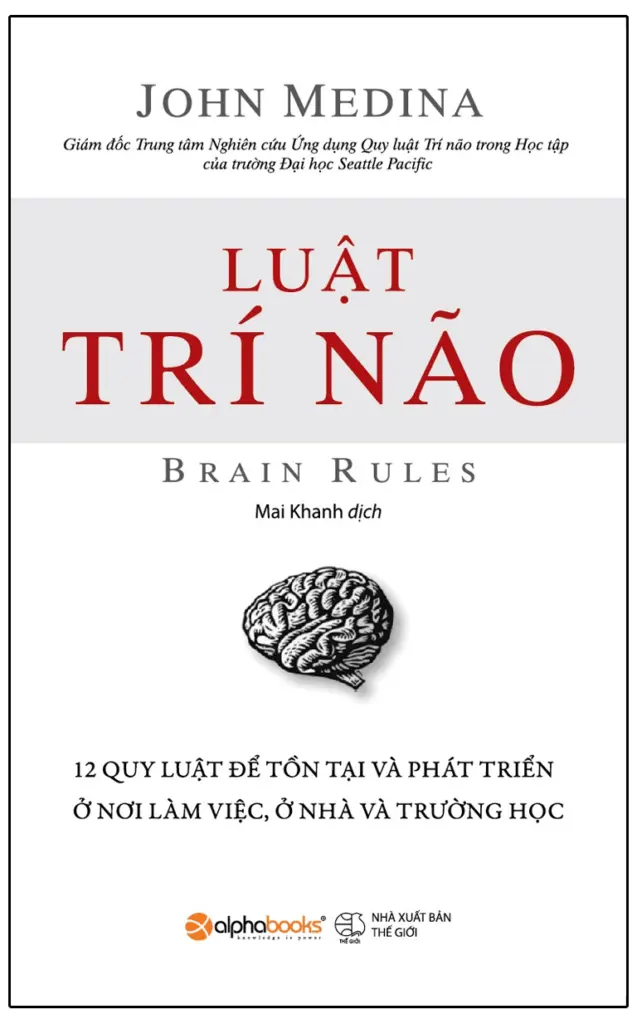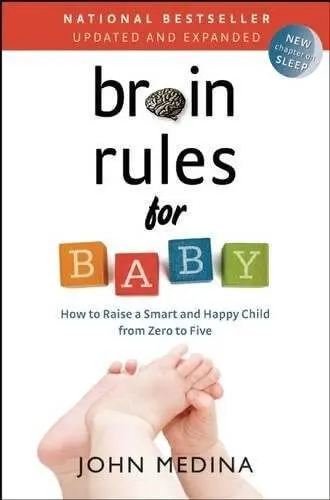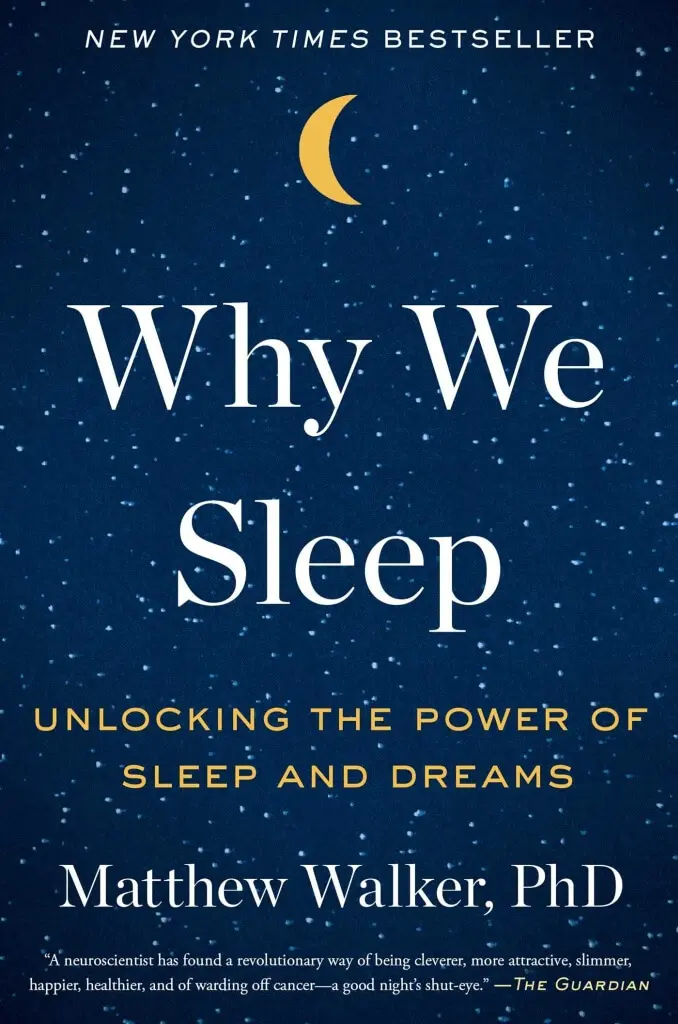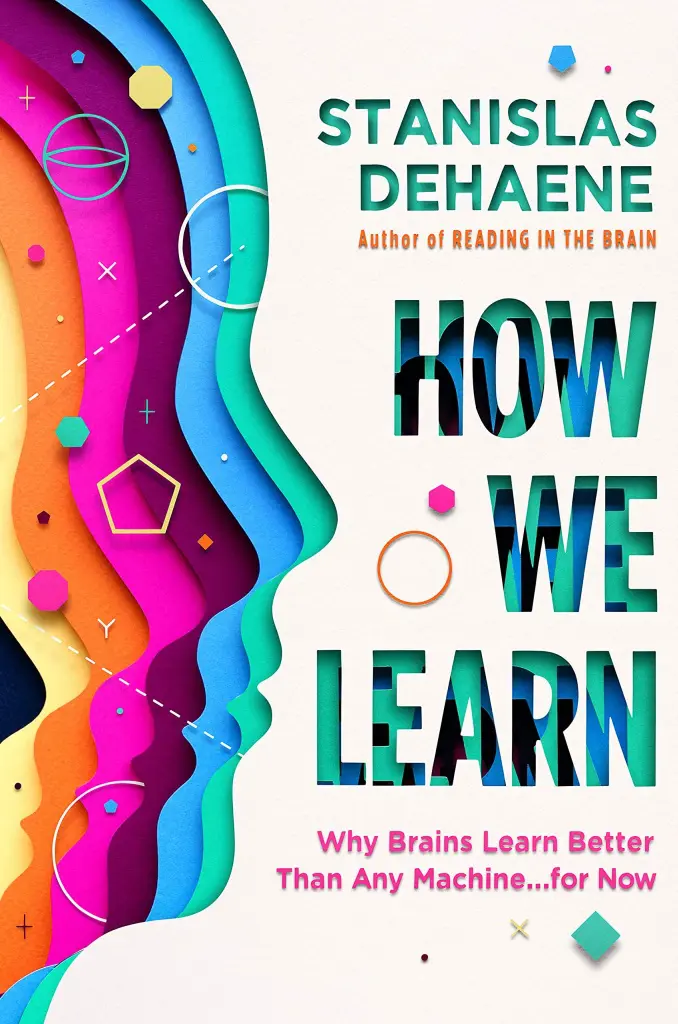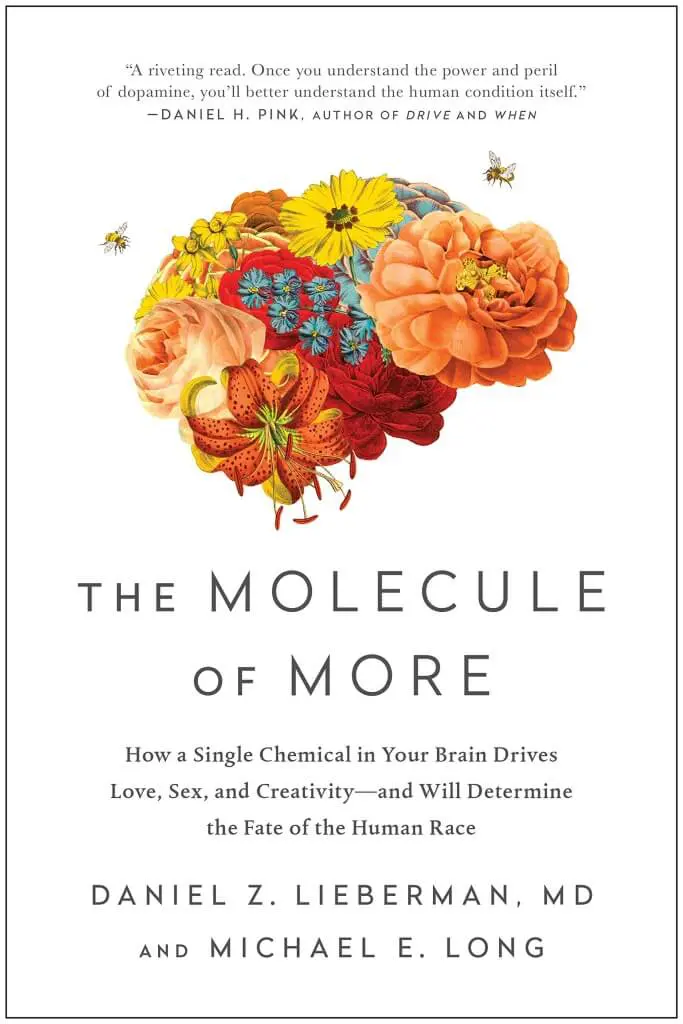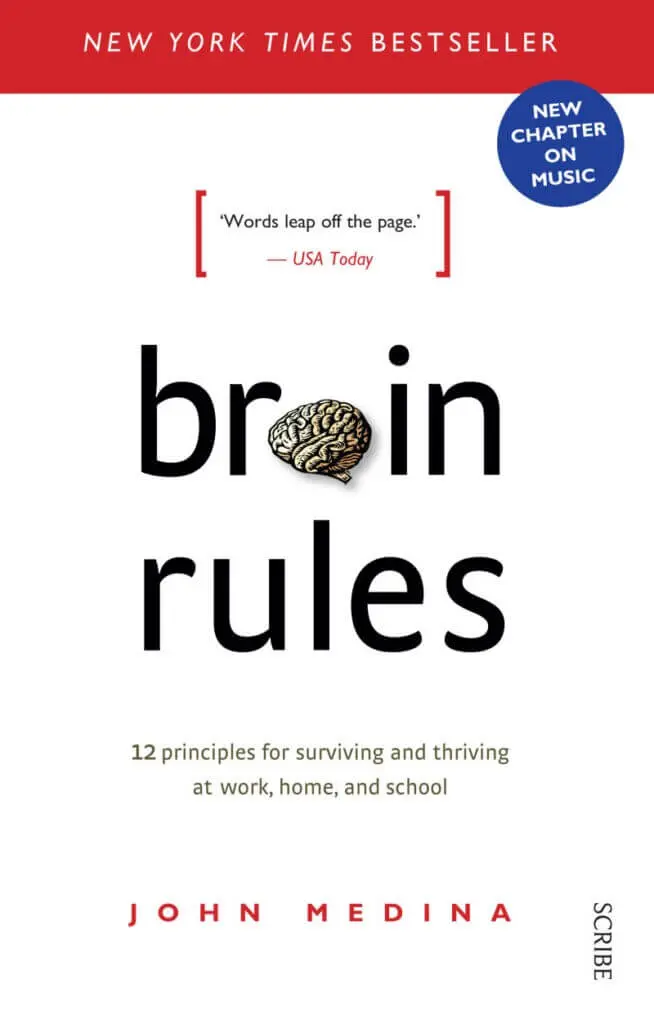
Most of us have no idea what’s really going on inside our heads. Yet brain scientists have uncovered details every business leader, parent, and teacher should know—like the need for physical activity to get your brain working its best.
How do we learn? What exactly do sleep and stress do to our brains? Why is multi-tasking a myth? Why is it so easy to forget—and so important to repeat new knowledge? Is it true that men and women have different brains?
In Brain Rules, Dr. John Medina, a molecular biologist, shares his lifelong interest in how the brain sciences might influence the way we teach our children and the way we work. In each chapter, he describes a brain rule—what scientists know for sure about how our brains work—and then offers transformative ideas for our daily lives.
Medina’s fascinating stories and infectious sense of humor breathe life into brain science. You’ll learn why Michael Jordan was no good at baseball. You’ll peer over a surgeon’s shoulder as he proves that most of us have a Jennifer Aniston neuron. You’ll meet a boy who has an amazing memory for music but can’t tie his own shoes.
You will discover how:
- Every brain is wired differently
- Exercise improves cognition
- We are designed to never stop learning and exploring
- Memories are volatile
- Sleep is powerfully linked with the ability to learn
- Vision trumps all of the other senses
- Stress changes the way we learn
In the end, you’ll understand how your brain really works—and how to get the most out of it.
Survival
The human brain evolved, too.
- We don’t have one brain in our heads; we have three. We started with a “lizard brain” to keep us breathing, then added a brain like a cat’s, and then topped those with the thin layer of Jell-O known as the cortex—the third, and powerful, “human” brain.
- We took over the Earth by adapting to change itself, after we were forced from the trees to the savannah when climate swings disrupted our food supply.
- Going from four legs to two to walk on the savannah freed up energy to develop a complex brain.
- Symbolic reasoning is a uniquely human talent. It may have arisen from our need to understand one another’s intentions and motivations, allowing us to coordinate within a group.
- The brain is a survival organ. It is designed to solve problems related to surviving in an unstable outdoor environment and to do so in nearly constant motion (to keep you alive long enough to pass your genes on). We were not the strongest on the planet but we developed the strongest brains, the key to our survival.
- The strongest brains survive, not the strongest bodies. Our ability to solve problems, learn from mistakes, and create alliances with other people helps us survive. We took over the world by learning to cooperate and forming teams with our neighbors.
- Our ability to understand each other is our chief survival tool. Relationships helped us survive in the jungle and are critical to surviving at work and school today.
- If someone does not feel safe with a teacher or boss, he or she may not perform as well. If a student feels misunderstood because the teacher cannot connect with the way the student learns, the student may become isolated.
- There is no greater anti-brain environment than the classroom and cubicle.
Exercise
Exercise boosts brain power.
- Our brains were built for walking — 19 km a day!
- To improve your thinking skills, move.
- Exercise gets blood to your brain, bringing it glucose for energy and oxygen to soak up the toxic electrons that are left over. It also stimulates the protein that keeps neurons connecting.
- Aerobic exercise just twice a week halves your risk of general dementia. It cuts your risk of Alzheimer’s by 60 percent.
- WHO recommended adults aged 18-64 should do at least 150 minutes of moderate-intensity aerobic exercise a week.
- The human brain evolved under conditions of almost constant motion. From this, one might predict that the optimal environment for processing information would include motion. That is exactly what one finds. Indeed, the best business meeting would have everyone walking at about 1.8 miles【2,9 km】 per hour.
- Researchers studied two elderly populations that had led different lifestyles, one sedentary and one active. Cognitive scores were profoundly influenced. Exercise positively affected executive function, spatial tasks, reaction times and quantitative skills.
- So researchers asked: If the sedentary populations become active, will their cognitive scores go up? Yes, it turns out, if the exercise is aerobic. In four months, executive functions vastly improve; longer, and memory scores improve as well.
- Exercise improves cognition for two reasons:
- Exercise increases oxygen flow into the brain, which reduces brain-bound free radicals. One of the most interesting findings of the past few decades is that an increase in oxygen is always accompanied by an uptick in mental sharpness.
- Exercise acts directly on the molecular machinery of the brain itself. It increases neurons’ creation, survival, and resistance to damage and stress.
Sleep
Sleep well, think well.
- The brain is in a constant state of tension between cells and chemicals that try to put you to sleep and cells and chemicals that try to keep you awake.
- The neurons of your brain show vigorous rhythmical activity when you’re asleep—perhaps replaying what you learned that day.
- People vary in how much sleep they need and when they prefer to get it, but the biological drive for an afternoon nap is universal.
- Loss of sleep hurts attention, executive function, working memory, mood, quantitative skills, logical reasoning, and even motor dexterity.
- When we’re asleep, the brain is not resting at all. It is almost unbelievably active! It’s possible that the reason we need to sleep is so that we can learn.
- Sleep must be important because we spend 1/3 of our lives doing it! Loss of sleep hurts attention, executive function, working memory, mood, quantitative skills, logical reasoning, and even motor dexterity.
- We still don’t know how much we need! It changes with age, gender, pregnancy, puberty, and so much more.
- Napping is normal. Ever feel tired in the afternoon? That’s because your brain really wants to take a nap. There’s a battle raging in your head between two armies. Each army is made of legions of brain cells and biochemicals –- one desperately trying to keep you awake, the other desperately trying to force you to sleep. Around 3 p.m., 12 hours after the midpoint of your sleep, all your brain wants to do is nap.
- Taking a nap might make you more productive. In one study, a 26-minute nap improved NASA pilots’ performance by 34 percent.
- Don’t schedule important meetings at 3 p.m. It just doesn’t make sense.
Stress
Stressed brains don’t learn the same way.
- Your body’s defense system—the release of adrenaline and cortisol—is built for an immediate response to a serious but passing danger, such as a saber-toothed tiger. Chronic stress, such as hostility at home, dangerously deregulates a system built only to deal with short-term responses.
- Under chronic stress, adrenaline creates scars in your blood vessels that can cause a heart attack or stroke, and cortisol damages the cells of the hippocampus, crippling your ability to learn and remember.
- Individually, the worst kind of stress is the feeling that you have no control over the problem—you are helpless.
- Emotional stress has huge impacts across society, on children’s ability to learn in school and on employees’ productivity at work.
- Your brain is built to deal with stress that lasts about 30 seconds. The brain is not designed for long term stress when you feel like you have no control. The saber-toothed tiger ate you or you ran away but it was all over in less than a minute. If you have a bad boss, the saber-toothed tiger can be at your door for years, and you begin to deregulate. If you are in a bad marriage, the saber-toothed tiger can be in your bed for years, and the same thing occurs. You can actually watch the brain shrink.
- Stress damages virtually every kind of cognition that exists. It damages memory and executive function. It can hurt your motor skills. When you are stressed out over a long period of time it disrupts your immune response. You get sicker more often. It disrupts your ability to sleep. You get depressed.
- The emotional stability of the home is the single greatest predictor of academic success. If you want your kid to get into Harvard, go home and love your spouse.
- You have one brain. The same brain you have at home is the same brain you have at work or school. The stress you are experiencing at home will affect your performance at work, and vice versa.
Wiring
Every brain is wired differently.
- What you do and learn in life physically changes what your brain looks like—it literally rewires it.
- The various regions of the brain develop at different rates in different people.
- No two people’s brains store the same information in the same way in the same place.
- We have a great number of ways of being intelligent, many of which don’t show up on IQ tests.
- What YOU do and learn in life physically changes what your brain looks like – it literally rewires it. We used to think there were just 7 categories of intelligence. But categories of intelligence may number more than 7 billion—roughly the population of the world.
- No two people have the same brain, not even twins. Every student’s brain, every employee’s brain, every customer’s brain is wired differently.
- You can either accede to it or ignore it. The current system of education ignores it by having grade structures based on age. Businesses such as Amazon are catching on to mass customization (the Amazon homepage and the products you see are tailored to your recent purchases).
- Regions of the brain develop at different rates in different people. The brains of school children are just as unevenly developed as their bodies. Our school system ignores the fact that every brain is wired differently. We wrongly assume every brain is the same.
- Most of us have a “Jennifer Aniston” neuron (a neuron lurking in your head that is stimulated only when Jennifer Aniston is in the room).
Attention
We don’t pay attention to boring things.
- The brain’s attentional “spotlight” can focus on only one thing at a time: no multitasking.
- We are better at seeing patterns and abstracting the meaning of an event than we are at recording detail.
- Emotional arousal helps the brain learn.
- Audiences check out after 10 minutes, but you can keep grabbing them back by telling narratives or creating events rich in emotion.
- What we pay attention to is profoundly influenced by memory. Our previous experience predicts where we should pay attention. Culture matters too. Whether in school or in business, these differences can greatly affect how an audience perceives a given presentation.
- We pay attention to things like emotions, threats and sex. Regardless of who you are, the brain pays a great deal of attention to these questions: Can I eat it? Will it eat me? Can I mate with it? Will it mate with me? Have I seen it before?
- The brain is not capable of multi-tasking. We can talk and breathe, but when it comes to higher level tasks, we just can’t do it.
- Driving while talking on a cell phone is like driving drunk. The brain is a sequential processor and large fractions of a second are consumed every time the brain switches tasks. This is why cell-phone talkers are a half-second slower to hit the brakes and get in more wrecks.
- Workplaces and schools actually encourage this type of multi-tasking. Walk into any office and you’ll see people sending e-mail, answering their phones, Instant Messaging, and on MySpace—all at the same time. Research shows your error rate goes up 50% and it takes you twice as long to do things.
- When you’re always online you’re always distracted. So the always online organization is the always unproductive organization.
Memory (short-term)
Repeat to remember.
- Most memories disappear within minutes, but those that survive the fragile period strengthen with time.
- The human brain can only hold about
sevenfour pieces of information for less than 30 seconds! Which means, your brain can only handle a 7-digit phone number. If you want to extend the 30 seconds to a few minutes or even an hour or two, you will need to consistently re-expose yourself to the information. Memories are so volatile that you have to repeat to remember. - Improve your memory by elaborately encoding it during its initial moments. Many of us have trouble remembering names. If at a party you need help remembering Mary, it helps to repeat internally more information about her. “Mary is wearing a blue dress and my favorite color is blue.” It may seem counterintuitive at first but study after study shows it improves your memory.
- Brain Rules in the classroom. In partnership with the University of Washington and Seattle Pacific University, Medina tested this Brain Rule in real classrooms of 3rd graders. They were asked to repeat their multiplication tables in the afternoons. The classrooms in the study did significantly better than the classrooms that did not have the repetition. If brain scientists get together with teachers and do research, we may be able to eliminate need for homework since learning would take place at school, instead of the home.
Memory (long-term)
Remember to repeat.
- Long-term memories are formed in a two-way conversation between the hippocampus and the cortex, until the hippocampus breaks the connection and the memory is fixed in the cortex—which can take years.
- Our brains give us only an approximate view of reality, because they mix new knowledge with past memories and store them together as one.
- The way to make long-term memory more reliable is to incorporate new information gradually and repeat it in timed intervals.
- It takes years to consolidate a memory. Not minutes, hours, or days but years. What you learn in first grade is not completely formed until your sophomore year in high school.
- Medina’s dream school is one that repeats what was learned, not at home, but during the school day, 90-120 minutes after the initial learning occurred. Our schools are currently designed so that most real learning has to occur at home.
- How do you remember better? Repeated exposure to information / in specifically timed intervals / provides the most powerful way to fix memory into the brain.
- Forgetting allows us to prioritize events. But if you want to remember, remember to repeat.
Sensory Integration
Stimulate more of the senses.
- We absorb information about an event through our senses, translate it into electrical signals (some for sight, others from sound, etc.), disperse those signals to separate parts of the brain, then reconstruct what happened, eventually perceiving the event as a whole.
- The brain seems to rely partly on past experience in deciding how to combine these signals, so two people can perceive the same event very differently.
- Our senses evolved to work together—vision influencing hearing, for example—which means that we learn best if we stimulate several senses at once.
- Smells have an unusual power to bring back memories, maybe because smell signals bypass the thalamus and head straight to their destinations, which include that supervisor of emotions known as the amygdala.
- Our senses work together so it is important to stimulate them! Your head crackles with the perceptions of the whole world, sight, sound, taste, smell, touch, energetic as a frat party.
- Smell is unusually effective at evoking memory. If you’re tested on the details of a movie while the smell of popcorn is wafted into the air, you’ll remember 10-50% more.
- Smell is really important to business. When you walk into Starbucks, the first thing you smell is coffee. They have done a number of things over the years to make sure that’s the case.
- The learning link. Those in multisensory environments always do better than those in unisensory environments. They have more recall with better resolution that lasts longer, evident even 20 years later.
Vision
Vision trumps all other senses.
- Vision is by far our most dominant sense, taking up half of our brain’s resources.
- What we see is only what our brain tells us we see, and it’s not 100 percent accurate.
- The visual analysis we do has many steps. The retina assembles photons into little movie-like streams of information. The visual cortex processes these streams, some areas registering motion, others registering color, etc. Finally, we combine that information
back together so we can see. - We learn and remember best through pictures, not through written or spoken words.
- We are incredible at remembering pictures. Hear a piece of information, and three days later you’ll remember 10% of it. Add a picture and you’ll remember 65%.
- Pictures beat text as well, in part because reading is so inefficient for us. Our brain sees words as lots of tiny pictures, and we have to identify certain features in the letters to be able to read them. That takes time.
- Why is vision such a big deal to us? Perhaps because it’s how we’ve always apprehended major threats, food supplies and reproductive opportunity.
- Toss your PowerPoint presentations. It’s text-based (nearly 40 words per slide), with six hierarchical levels of chapters and subheads—all words. Professionals everywhere need to know about the incredible inefficiency of text-based information and the incredible effects of images. Burn your current PowerPoint presentations and make new ones.
Music
Study or listen to boost cognition.
- Formal musical training improves intellectual skills in several cognitive domains. Music boosts spatiotemporal skills, vocabulary, picking out sounds in a noisy environment, working memory, and sensory-motor skills.
- Formal music training also aids social cognition. People with music training are better able to detect the emotional information in speech. Empathy skills and other prosocial behaviors improve.
- Variations on these effects have been shown in adults, college students, schoolchildren, even infants.
- There’s a commercial from the 1970s, starring actor and director Orson Welles, about a California winery’s fastidious production philosophy. “We will sell no wine before its time,” Welles intoned. That tagline could easily be applied to our subject. Ideas about how music affects the brain long have been the providence of anecdote. But the research has been maturing for a while now. Now it is of sufficient quality that a few solid things can be said about it.
- Science has a wholly undeserved reputation for being confident, quick, and decisive. Real science is insecure, slow, and obsessed with doing more experiments. The research on music and the brain is a terrific illustration of how tentative our enterprise can be. Many bright people have labored long and hard to bring up to the surface the few nuggets available in this chapter. It’s exciting stuff that will only get more exciting as the years go by.
- A music chapter has been on my mind for years. My wife is a classical composer, and I have been around swirls of her music our entire marriage (more than three decades now). It is natural for me as a brain scientist to wonder about how music affects her, and me, and our children—the way we think and the way we feel.
- Writing about these data, tentative as they may be, is an attempt to understand what goes on in the brain—including yours—when we perform or listen to our favorite songs. I think you will find it uplifting. And, if you live with a musician, perhaps also explanatory.
Gender
Male and female brains are different.
- The X chromosome that males have one of and females have two of—though one acts as a backup—is a cognitive “hot spot,” carrying an unusually large percentage of genes involved in brain manufacture.
- Women are genetically more complex, because the active X chromosomes in their cells are a mix of Mom’s and Dad’s. Men’s X chromosomes all come from Mom, and their Y chromosome carries less than 100 genes, compared with about 1,500 for the X chromosome.
- Men’s and women’s brains are different structurally and biochemically—men have a bigger amygdala and produce serotonin faster, for example—but we don’t know if those differences have significance.
- Men and women respond differently to acute stress: Women activate the left hemisphere’s amygdala and remember the emotional details. Men use the right amygdala and get the gist.
- What’s different? Mental health professionals have known for years about sex-based differences in the type and severity of psychiatric disorders. Males are more severely afflicted by schizophrenia than females. By more than 2 to 1, women are more likely to get depressed than men, a figure that shows up just after puberty and remains stable for the next 50 years. Males exhibit more antisocial behavior. Females have more anxiety. Most alcoholics and drug addicts are male. Most anorexics are female.
- Men and women handle acute stress differently. When researcher Larry Cahill showed them slasher films, men fired up the amygdale in their brain’s right hemisphere, which is responsible for the gist of an event. Their left was comparatively silent. Women lit up their left amygdale, the one responsible for details. Having a team that simultaneously understood the gist and details of a given stressful situation helped us conquer the world.
- Men and women process certain emotions differently. Emotions are useful. They make the brain pay attention. These differences are a product of complex interactions between nature and nurture.
Exploration
We are powerful and natural explorers.
- Babies are the model of how we learn—not by passive reaction to the environment but by active testing through observation,
hypothesis, experiment, and conclusion. - Specific parts of the brain allow this scientific approach. The right prefrontal cortex looks for errors in our hypothesis (“The sabertoothed tiger is not harmless”), and an adjoining region tells us to change behavior (“Run!”).
- We can recognize and imitate behavior because of “mirror neurons” scattered across the brain.
- Some parts of our adult brains stay as malleable as a baby’s, so we can create neurons and learn new things throughout our lives.
- The desire to explore never leaves us despite the classrooms and cubicles we are stuffed into. Babies are the model of how we learn—not by passive reaction to the environment but by active testing through observation, hypothesis, experiment, and conclusion. Babies methodically do experiments on objects, for example, to see what they will do.
- Google takes to heart the power of exploration. For 20 percent of their time, employees may go where their mind asks them to go. The proof is in the bottom line: fully 50 percent of new products, including Gmail and Google News, came from “20 percent time.”
